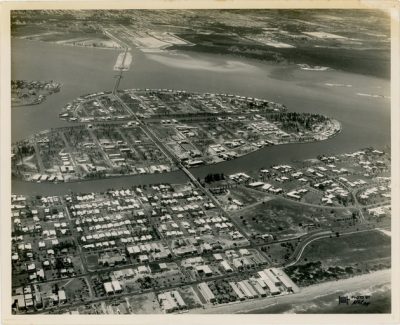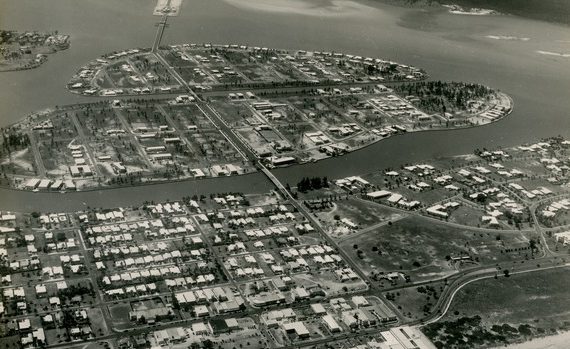
Everyone knows “a picture is worth a thousand words.” But some pictures need a little help in getting those thousand words into the open.
The Greater North Miami Historical Society had a collection of just such images. Founded in 1997, the society works to preserve the history of North Miami and the surrounding areas, spanning Aventura, Biscayne Park, Miami Shores, North Miami and North Miami Beach. Its historical collection dates back to the 1930s and includes over 4,000 negatives, photographs and other items.
As membership in the society declined over the years, however, so did maintenance and organization of the collection. While past volunteers had created an index, many of the items had never been digitized, and so were not only unavailable to the community at large but, stored in less-than-ideal conditions, had begun to degrade.
North Miami City Councilman Scott Galvin, a founding member of the society, knew how valuable the collection was as a piece of history. As a former history teacher, he was well aware of “how important it is to record the past.” As an FIU alumnus, he was also familiar with FIU’s reputation for excellence. At a meeting one day with FIU Libraries Associate Dean Bryan Cooper, he mentioned the collection.
Cooper immediately thought of the Libraries’ Digital Collections Center (DCC), and proposed a partnership to get the collection digitized and preserved. The proposal (which included further collaboration with local historian Susan Weiss and Barry University archivist Ximena Valdivia) was submitted to the Southeast Florida Library Information Network, and won a $5,000 grant designed to support projects that aim to create and share significant local digital content.
The process of digitization can be very time-consuming. It includes not just scanning documents and uploading them to a server but also creating “metadata,” which often necessitates a great deal of research.
Metadata is data that describes other data – in the case of a photograph, for example, metadata might include the names of the people in the photograph, the year and location the photograph was taken and keywords about the subject of the photograph. Images are uploaded onto a website, and metadata helps identify, organize and facilitate searches, turning a collection of disparate photos into a searchable database of information.
Without metadata, it would take a long time to find any particular item in the collection, and much of the context of the image would be lost forever. “It’s been so exciting to uncover the stories behind the photos, from images of the explosion at the Teamsters Union headquarters in 1961 to a dance at Ollie Trout’s Trailer Park, the most expensive tourist trailer park of the 1930’s,” says Rita Cauce, one of the project’s curators.
DCC Coordinator Jamie Rogers agrees. “We are proud of providing access to local historical collections that wouldn’t otherwise have visibility,” she says.
And she’s quick to point out that while history majors might seem to be the most logical group of people to be interested in the collection, there are actually a number of students who could benefit from the project.
The photos themselves are of interest to art students, for example. Architecture students can study the plat maps and architectural drawings, while marketing and business students can peruse the newspapers for case studies of advertisements and notices.
So far, over 300 items have been digitized. The project is ongoing, with Galvin matching the original grant with city council funds. The collection is stored in dPanther, FIU’s digital repository which hosts unique digital collections of cultural, historical, scholarly, educational, and community resources.






